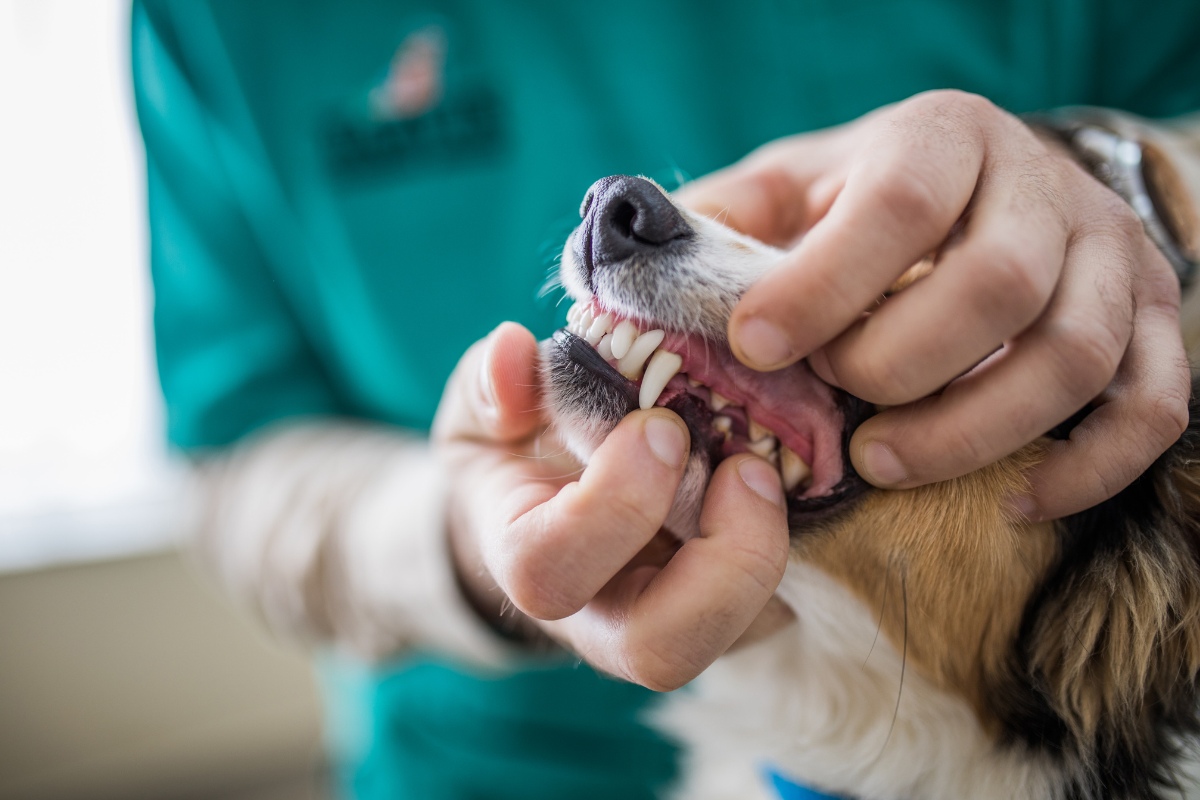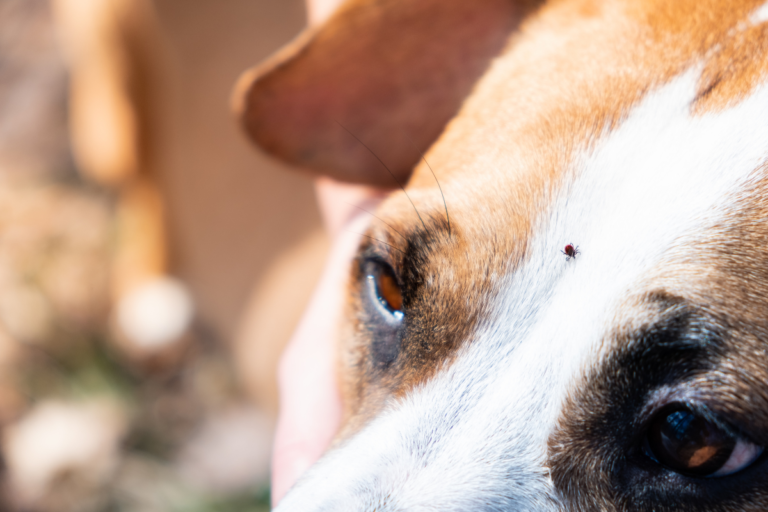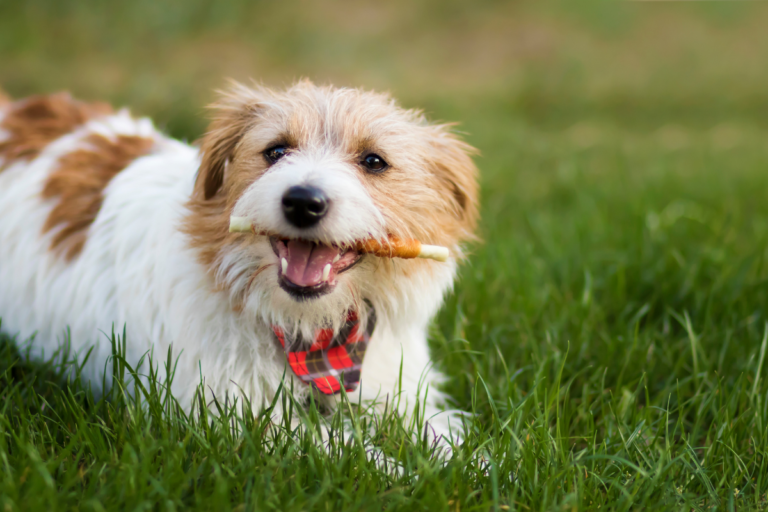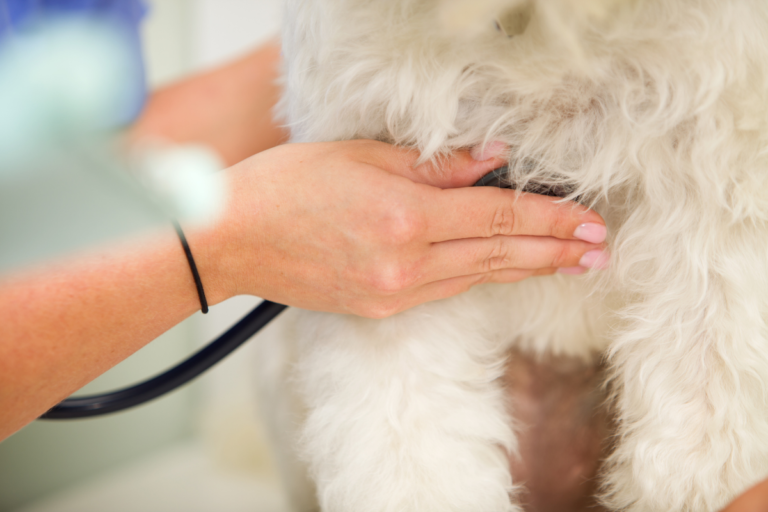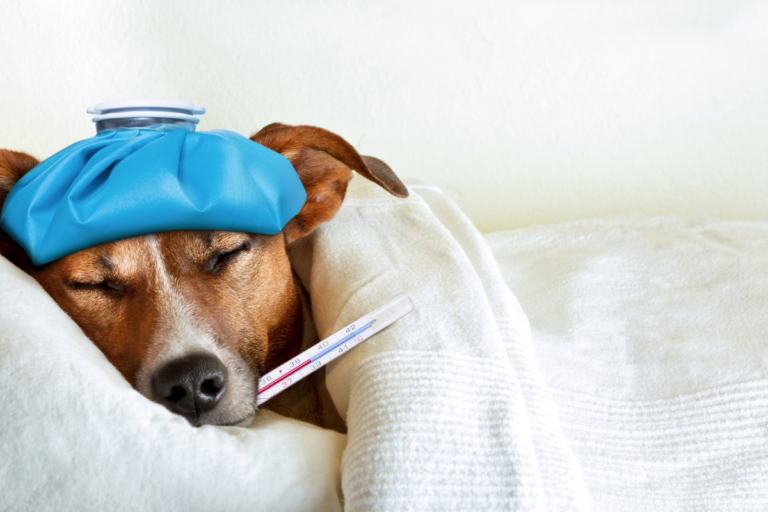Happy Mouth, Happy Hound: Defeating Dog Gum Disease
Understanding Gum Disease in Dogs
Let’s chat about dog gum disease so we can get what it is, why it matters, and what can kick it off.
Definition and Impact of Periodontal Disease
Periodontal disease in dogs, better known as gum disease, is like a sneaky bacterial attack on the stuff that keeps a dog’s teeth in place, like the gums and bones. Over time, it can lead to pain, loss of teeth, and some nasty diagnoses no one wants for their pooch. Trust us, you don’t want it to get serious (Berkeley Dog and Cat Hospital).
What’s wild is these bacteria aren’t just chilling in the mouth. They can hop on the fast train to other body parts, leading to big health problems like heart disease. If left unchecked, it can affect kidney, liver, and heart functions, causing a heap of trouble (Honest Paws). Want to know more? Peek at our guide on periodontal disease in dogs.
Causes and Risk Factors
The villain behind gum disease in dogs? Plaque! It’s just a clingy, sticky film that forms on their teeth. If ignored, it turns into calculus—talk about hard-headed! Once it sneaks below the gums, it stirs up inflammation and can mess up those periodontal tissues, risking tooth loss (Cornell University College of Veterinary Medicine).
What else sets the stage for gum disease?
- Breed and Size: Tiny pups like Chihuahuas often struggle with tight dental real estate.
- Oral Hygiene: Slacking on brushing teeth and skipping the vet cleanings isn’t helping.
- Diet and Nutrition: Junk food isn’t great for teeth; it speeds up plaque growth.
- Grooming Habits: Dirty toys or grooming kits are no-go’s; they bring unwanted germs.
- Teeth Alignment: Crooked teeth make cozy corners for bacteria.
- Systemic Health: A weak immune system makes dogs sitting ducks for gum troubles.
| Factor | Description |
|---|---|
| Breed and Size | Tiny doggos with cramped mouths struggle more with dental issues. |
| Oral Hygiene | Forgetting to brush and skipping vet cleanings ups the risk. |
| Diet and Nutrition | Bad diet fuels bacteria. |
| Grooming Habits | Filthy toys and grooming tools spread germs and bacteria. |
| Teeth Alignment | Crooked teeth create hard-to-clean spots for bacteria. |
| Systemic Health | Weaker immune systems make dogs more prone to catching infections. |
Spotting these triggers is key to stopping gum disease before it gets started. Curious about canine dental care? We’ve got you covered with plenty of pointers here.
Keeping an eye on these risk factors can help stop gum disease in its tracks, ensuring that your dog can flash a healthy smile all day long.
Detecting Gum Disease in Dogs
Keeping an eye on our dog’s oral health is part of being a great pet owner. Catching gum disease in the early stages can drastically impact our furry friend’s comfort and health. Let’s explore some warning signs and why spotting them sooner isn’t always easy.
Symptoms of Periodontal Disease
Periodontal disease, or gum disease, often sneaks up on us. Spotting these symptoms early means we can jump into action and help our pups feel better quicker.
Look out for these signs in our dogs:
- Bad Breath: Persistent stink breathing in our faces? It’s often one of the first hints of trouble.
- Red or Bleeding Gums: Rosy gums or ones that bleed, especially during chow time.
- Tartar Buildup: Grimy-looking yellow-brown stuff hugging the gums when their mouths are open.
- Drooling A Lot: Extra slobber — more than when begging for snacks — can mean they’re feeling off.
- Trouble Eating: They might drop food or stick to chewing on just one side.
- Loose or Missing Teeth: Bad gum health can give teeth the boot if it gets serious.
- Swollen Gums: Puffy gums pointing to some inflammation.
- Ouch! Or Pain: Pups might whine when their mouths are touched if they’re in discomfort.
| Symptom | Description |
|---|---|
| Bad Breath | Persistent stink mouth |
| Red or Bleeding Gums | Often during or after meals |
| Tartar Buildup | Grime along the gum edges |
| Drooling A Lot | Extra slobber-atory action |
| Trouble Eating | Reluctance, dropping food, favoring a side |
| Loose or Missing Teeth | Can happen from neglected gum health |
| Swollen Gums | Puffy and tender around the gums |
| Ouch! Or Pain | Sensitivity and whining with touch |
As Purina notes, these can signal issues ahead. Spot one? Best to dial up the vet (PetMD).
Early Diagnosis Challenges
Catching gum disease early can be tricky. Here are some hurdles we often bump into:
- Barely-There Signs: It starts with stuff like faint breath odors or slight gum redness—easy to miss.
- Hidden Problems: Damage might brew below where we can’t peek. By visible symptoms, it could’ve taken hold (Cornell University College of Veterinary Medicine).
- Dropping the Routine Ball: Lots of us skip checking our pup’s mouths regularly, missing early hints.
- Silent Troopers: Dogs are tough cookies, often hiding pain, delaying flagging up dental issues.
For more on nasty dog diseases, hit up dog diseases and symptoms. Regular vet visits and home dental care are keys to spotting problems early. A combo of professional cleanings and home tooth brushing works wonders before worries get worse.
Watchful eyes and prompt responses can spare our buddies from a lot of pain — and spare ourselves from expensive vet bills. Recognizing symptoms early means we’re doing our part to keep them tail-waggin’ happy and healthy.
Get the 411 on canine dental care by checking out our detailed article on dental disease in dogs and some extra help with your dogs teeth.
Preventing Gum Disease in Dogs
We know keeping those canine chompers healthy is key for our furry pals. It’s not just about fresh breath – dodging doggy gum disease means preventing those painful health hiccups that come with neglected chompers.
Importance of Dental Care
Giving those doggy teeth the TLC they deserve isn’t just about the sparkling smile. Regular doggie dentist care is all it takes to tackle tartar and plaque—the sneaky culprits of gum trouble. So, don’t skip the vet visits and at-home brushing bonanza to keep Fido’s grin in shape.
Recommended Preventive Measures
Stopping gum trouble in its tracks is all about mixing up vet smarts with home care tactics. Here’s our secret sauce:
-
Regular Vet Checkups: Once a year, let the vet get in there for a good look. Under that snooze-inducing anesthesia, the vet can work magic—clean teeth, spot sneaky gum disease signs. Catching it early keeps things from going south fast. Need details? Peek here.
-
Daily Brushing: Gotta grab that doggy toothbrush and put in some elbow grease. Banishing plaque is a daily thing—human toothpaste not welcome! Check out the advice at Berkeley Dog and Cat Hospital.
-
Dental Chews and Toys: Hand over the chew toys! They’re like tiny toothbrushes, scrubbing away plaque while entertaining our four-legged buddies.
-
Dental-Specific Dog Food: Some kibble’s got the scoop on teeth-cleaning too. It whips away plaque and keeps your pup fueled.
-
Owner Training and Cooperation: Yeah, we need to be in on the action too. Learn the tricks of the trade with a treat or two as you go. Tricks and treats? Now we’re talking!
Here’s a chart that makes it crystal-clear:
| Preventive Measure | Benefits |
|---|---|
| Regular Vet Checkups | Catch problems early, deep clean |
| Daily Brushing | Dismiss plaque, keep gums fit |
| Dental Chews and Toys | Bust plaque and tartar, gum workout |
| Dental-Specific Dog Food | Plaque shield, packed with nutrition |
| Owner Training/Cooperation | Easier and effective dental care |
By weaving these steps into our dog’s daily life, we’re saying buh-bye to gum woes and scoring a happy, healthy snout. Curious for more canine dental know-how? Swing by our article on dogs teeth.
Treating Periodontal Disease in Dogs
Taking care of periodontal disease in dogs is all about mixing up the vet’s expertise with some DIY at-home practices to make sure our pups’ teeth and gums stay healthy. Let’s take a look at what we can do.
Professional Dental Cleanings
When it comes to battling dog gum disease, professional cleanings are the big guns. These cleanings go beyond our at-home brushing, reaching beneath the gum where gunk likes to hide. And yep, they often put our pups under anesthesia to keep them calm and cozy.
What to Expect During a Professional Dental Cleaning:
- Anesthetic Dental Cleanings: Anesthesia is used to get a thorough clean, knocking out plaque and tartar. Before diving in, vets check with blood tests to see if our pets are up for the task.
- Cost Factors: Cost can really swing, depending on where you’re located, what needs doing, and who’s doing it. Check out this price range, running anywhere from $500 to $5,000, according to PetMD).
- Frequency: It’s smart to schedule these cleanings yearly to keep gum disease at bay. Partner this with some at-home love for the best results (Berkeley Dog and Cat Hospital).
| Procedure | Cost Range |
|---|---|
| Basic Cleaning | $500 – $1,000 |
| Advanced Cleaning (with complications) | $1,000 – $3,000 |
| Specialist Cleaning | $3,000 – $5,000 |
Mahopac Animal Hospital reminds us how vital it is to keep up with regular vet check-ups to dodge any major mouth woes.
Treatment Options for Advanced Cases
When gum disease has made itself too comfy, we need to step up the game with more intensive treatments to save our dog’s smile and stop further damage.
Common Treatments for Advanced Periodontal Disease:
- Scaling and Root Planing: Think of it as a deep cleansing session getting below the gum line and tackling the tooth root.
- Tooth Extractions: Sometimes, pulling out the troublemakers is the only way to stop the disease from causing chaos and ease the hurt.
- Antibiotic Therapy: Tough infections need antibiotics to keep bad bacteria in check and help things heal up.
According to Cornell University College of Veterinary Medicine, managing doggie periodontal disease is all about teamwork: owner education, working with a cooperative pup, and annual vet visits under anesthesia.
If cost is a worry, consider planning for dental expenses and looking into insurance or clinic payment plans.
Keeping our four-legged buddies’ dental health strong means regular vet visits and serious treatments when needed, mixed with daily care like brushing and long-term oral health habits such as dental chews. For more at-home tips, check out canine dental.
By showing our dogs’ teeth some love, we help them live their best lives without the pain and drama of gum disease.
Managing Gum Disease Costs
Financial Considerations
Taking care of our dogs’ gums is like a ticket to their good health, but it’s often not cheap. Ever heard of folks shelling out anywhere from $500 to a cool $5,000 for dental work on their pups? Yep, that’s the reality. And it all depends on things like where you live and whether you’re seeing just a regular vet or a superstar dental guru. When gum disease reaches those hairy stages three and four, get ready to part with big bucks.
Here’s how your wallet might feel as you work through the stages of doggy gum disease:
| Treatment Stage | Estimated Cost (USD) |
|---|---|
| Stage 1 | $500 – $1,200 |
| Stage 2 | $800 – $1,500 |
| Stages 3 & 4 | $2,000 – $5,000 |
Ignoring these costs isn’t an option if we genuinely care about our pups. Pretend nothing’s wrong, and you’ll be signing up for potentially pricier health problems down the road. Yikes!
Budgeting for Dental Procedures
Keep those vet bills from getting out of control with some savvy budget moves. Here’s how we can help our furry pals get top-notch care without handing over our life savings:
-
Routine Check-ups: Catch problems early with regular visits to the vet. Head over to our canine dental page to get the lowdown on nip-it-in-the-bud tactics.
-
Pet Insurance: Seriously consider insurance that includes dental care. It’ll turn those potential bank-breakers into manageable monthly premiums. Make sure the plan takes pet chompers seriously.
-
Health Savings Plans: Set aside a rainy-day (or unexpected vet day) fund for Rocky or Bella. It’ll be a lifesaver in a pinch.
-
Payment Plans: See if your vet’s game for spacing out those payments. It splits the big hit over several months, making it way easier on the wallet.
-
Preventive Care: For the love of bones, get ahead with preventive care! Brushing, dental chews, and regular cleanings do wonders. For home-care tips, browse our dogs teeth section.
Smart budgeting ensures our doggos stay happy, healthy, and full of bounce. For a bigger bite into managing their gum disease and keeping those pearly whites sparkling, check out our guides on periodontal disease in dogs and dental disease in dogs.
Ensuring Dental Health in Dogs
We all want our pups to flash those pearly whites, right? Keeping their teeth good ain’t just about bright smiles, it’s taking down the monster called periodontal disease in dogs. Here’s the lowdown on a few tricks and tips to make sure their chompers are in top shape.
At-Home Dental Care Tips
When it comes to keeping paws and tail wagging, we’re the guardians of their grin. Here’s how we can keep the toothy terror of dog gum disease at bay and make sure their smile stays dazzling:
- Daily Brushing: Let’s face it; brushing your dog’s teeth is like a spa day for their mouth. A soft-bristle toothbrush, a bit of persistence, and voilà – tartar, stand back! Regular scrubbing fights off dental disease in dogs. (PetMD)
- Dental Chews and Toys: Enter the scavengers – dental chews like Purina DentaLife, wired to flush out those stubborn mouth-munchers. These gems smartly snake through sneaky spots, knocking out tartar while freshening up that puppy breath. (Purina)
- Veterinary Oral Health Council (VOHC) Approved Products: If it’s got VOHC’s thumbs-up, you’re golden! They’re the tooth fairies making sure your pet’s teeth are fighting fit against plaque and tartar buildup. (VOHC)
| Dental Care Product | Frequency | Purpose |
|---|---|---|
| Toothbrush and Dog Toothpaste | Daily | Knockout plaque and tartar |
| Dental Treats | Regularly | Spiffy up teeth, zap bad breath |
| Dental Chew Toys | Regularly | Keep ‘em chewing, keep ‘em clean |
Long-Term Oral Health Strategies
For pro vibes in pup dental care, it’s time for the A-game beyond the daily grind:
- Regular Vet Visits: Swing by for the annual spa check! Vet cleanings aren’t just a quick rubdown; we’re talking a good ol’ inspection of teeth and gums under anesthesia. It’s like flossing times a hundred! (Cornell University College of Veterinary Medicine)
- Proper Equipment and Training: It’s all about the tools of the trade. Knowing our stuff with the right gadgets and teaching our buddies with a friendly pat and treat, we’re the dentists they never expected.
- Diet and Nutrition: Chow down on foods that fight plaque and sharpened to boost oral health. Some kibbles pack a punch with ingredients made to pamper those precious teeth.
- Avoiding Hard Toys: Banish those rock-hard toys that are a fast lane to chipped teeth! Softer, gentler toys are the heroes of playtime.
Curious about more doggy wellness know-how? Check out our articles on bloat symptoms dog, dog heart failure, and dog diabetes symptoms. Start these tips today, and keep your buddy’s laugh, bark, and grin loud and glorious!
